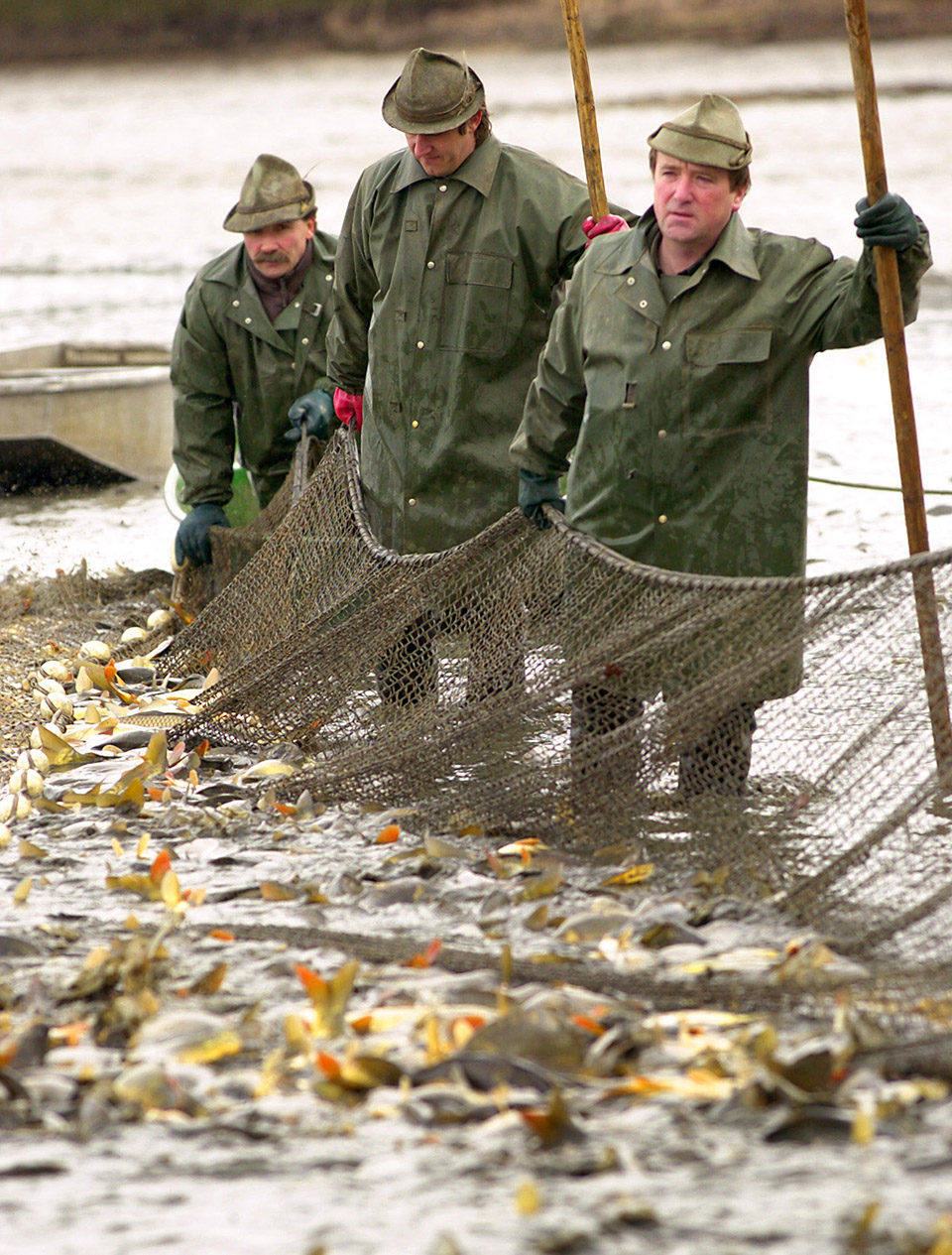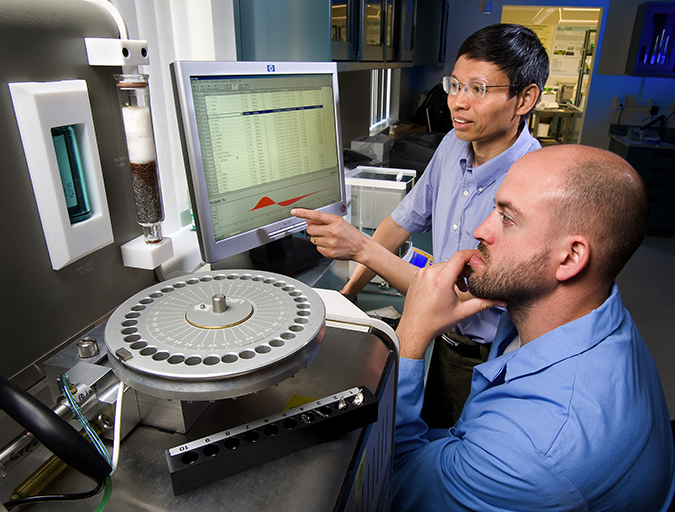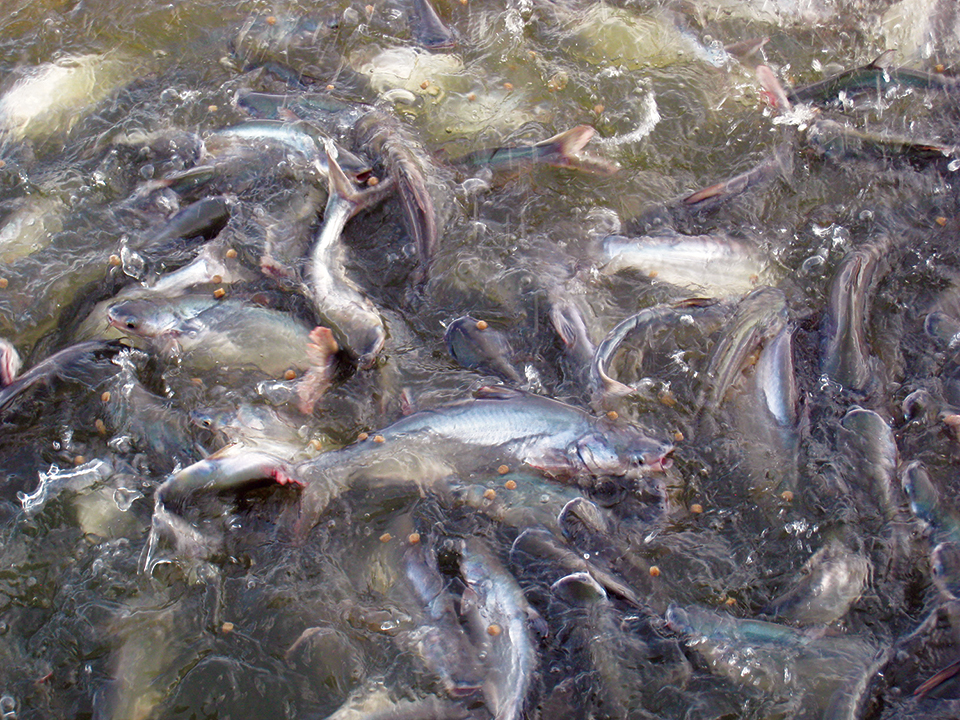Czech government encourages its citizens to up their fish intake, and not just during the holidays

Straddling the watersheds of three seas – the North Sea, Black Sea and Baltic Sea – the Czech Republic has 36,000 hectares of running waters. There are few natural lakes, mostly small water bodies at high elevation, with little significance for fisheries.
Dams and reservoirs increase the total water area. According to the United Nations Food and Agriculture Organization, the fishery management of the reservoirs focuses on a commercially important recreational fishing sector with nearly 350,000 anglers.
Common carp is the most popular fish for anglers. This stocked fish comes either from the production units that belong to the angling unions or from aquaculture producers.
Interestingly, the land-locked Czech Republic is one of Europe’s largest fish producers and the fourth-largest world producer and exporter of freshwater ornamental and aquarium fish.
King carp
Carp farming goes back to the 11th century. In the Middle Ages, a reported 75,000 ha of ponds existed, and business was so great that the period is considered the “Golden Age” of carp farming. Today, pond area has dropped to 41,000 ha being used for fish production.
Production averages around 450-500 kg/ha, with individual farms ranging 200-800 kg/ha. Currently, annual fish production fluctuates between 17,000 and 20,000 metric tons (MT). Common carp is by far the main species produced, but polyculture is a vital aspect of pond farming here. Chinese carps (grass, bighead and silver) along with traditional fish like tench and predatory species such as pike, zander, perch and European catfish, are all produced in ponds.
Salmonids are intensively raised in raceways, canals, earthen ponds and cages, but form a minor part of total aquaculture production. Around 700 MT of rainbow and brook trout are produced annually.
Imports, exports
Since 1998, total annual seafood imports into the Czech Republic have been about 30,000 mt, while exports have averaged just over 10,000 MT. The balance of foreign trade in freshwater fish is permanently positive, but the total value of the freshwater and marine fish trade is negative. This can be attributed to the high demand for marine fish, which is of course all imported, mainly as processed fish products.
The Czech Republic is the largest exporter of carp in Europe. Nearly 50 percent of exports goes to the Germany, and another 20 percent goes to the Slovakian market. Around half of the fish production is consumed domestically. Domestically processed fish is exported in only small quantities, because only a few processing facilities meet E.U. standards. A trademark for “Czech Carp” has been developed to support the marketing of carp.
Ornamental fish have a very significant place in the total aquaculture production of the Czech Republic. Its koi carp, goldfish, garden pond fish and tropical aquarium fish species are worth up to $15 million annually.
Seafood secondary
During my recent trip to Prague for the Aqua 2012 conference, my first meal was a delicious rainbow trout, grilled whole, with potato fritters and a garden salad. Judging by the food other people in the restaurant were eating, my choice of seafood was not a popular one. Big meals of various meats were clearly the order of the day.
According to the Czech Statistical Office, per-capita consumption of all meats has been stable over recent years, but poultry, fish and cheese are becoming more popular. While chicken consumption has multiplied, beef consumption has fallen in the long run, and although stagnant in consumption, pork is still the most popular meat.
On average, Czechs consumed around 80 kg of meat and 40 kg of pork per person in 2009. Their fish consumption was only about 6.2 kg, which was very low when compared with the average 11.0 kg in Europe. “Sea” fish are generally preferred to domestic fish in the Czech Republic.
Only a few years ago, having “fish” meant traditional carp dishes served at Christmas, but new hypermarkets now offer a wide variety of fresh and frozen fish and seafood. Over 70 percent of fish is consumed in hotels and restaurants. Not every restaurant offers seafood, but the hotels generally have good offerings.
Government promotion
The Czech government earmarked 150 million crowns (nearly $9 million) a few years ago to encourage its citizens to up their fish intake. Their aim was to get Czechs eating fish year round – not just at Christmas.
Unfortunately the market image of carp is quite poor. It also fails to attract younger consumers. The sector, which employs over 2,000 people, appears vulnerable to imports of cheaper fish from both neighboring European countries and Southeast Asia. Using European Union funding, the marketing program will be completed this year.
Seafood and health
The proportion of low birth-weight children – an indicator for newborn health and perinatal care – was 5.9 percent in the Czech Republic in 1999, which was slightly below the E.U. average of 6.3 percent and much below the 7.3 percent average for the reference countries.
Nutrition improvements are particularly critical during the 1,000-day window from conception to a child’s second birthday. This is when children need an adequate and nutritious diet to ensure healthy growth and development of strong cognitive abilities. Seafood is seen as essential during this time for mothers and babies. This fact might be considered next time there are funds for seafood promotions in the Czech Republic.
(Editor’s Note: This article was originally published in the November/December 2012 print edition of the Global Aquaculture Advocate.)
Now that you've reached the end of the article ...
… please consider supporting GSA’s mission to advance responsible seafood practices through education, advocacy and third-party assurances. The Advocate aims to document the evolution of responsible seafood practices and share the expansive knowledge of our vast network of contributors.
By becoming a Global Seafood Alliance member, you’re ensuring that all of the pre-competitive work we do through member benefits, resources and events can continue. Individual membership costs just $50 a year.
Not a GSA member? Join us.
Author
-

Roy D. Palmer, FAICD
GILLS
2312/80 Clarendon Street
Southbank VIC 3006 Australia
www.gillseafood.com[109,111,99,46,108,105,97,109,103,64,114,101,109,108,97,112,100,121,111,114]
Tagged With
Related Posts

Responsibility
A look at integrated multi-trophic aquaculture
In integrated multi-trophic aquaculture, farmers combine the cultivation of fed species such as finfish or shrimp with extractive seaweeds, aquatic plants and shellfish and other invertebrates that recapture organic and inorganic particulate nutrients for their growth.

Aquafeeds
A look at phospholipids in aquafeeds
Phospholipids are the major constituents of cell membranes and are vital to the normal function of every cell and organ. The inclusion of phospholipids in aquafeeds ensures increased growth, better survival and stress resistance, and prevention of skeletal deformities of larval and juvenile stages of fish and shellfish species.

Aquafeeds
Alternative feed ingredient universe to convene at F3 meeting
What started out as a simple yet ambitious contest to drive innovation in the aquafeed sector has evolved into a fully global competition – and collaboration – amongst ingredient suppliers and feed manufacturers.

Health & Welfare
Amino acid supplementation reduces protein levels in pangasius diets
Trials show that supplementation with amino acids could reduce protein levels from a typical 28 percent to 23 percent in pangasius diets.


